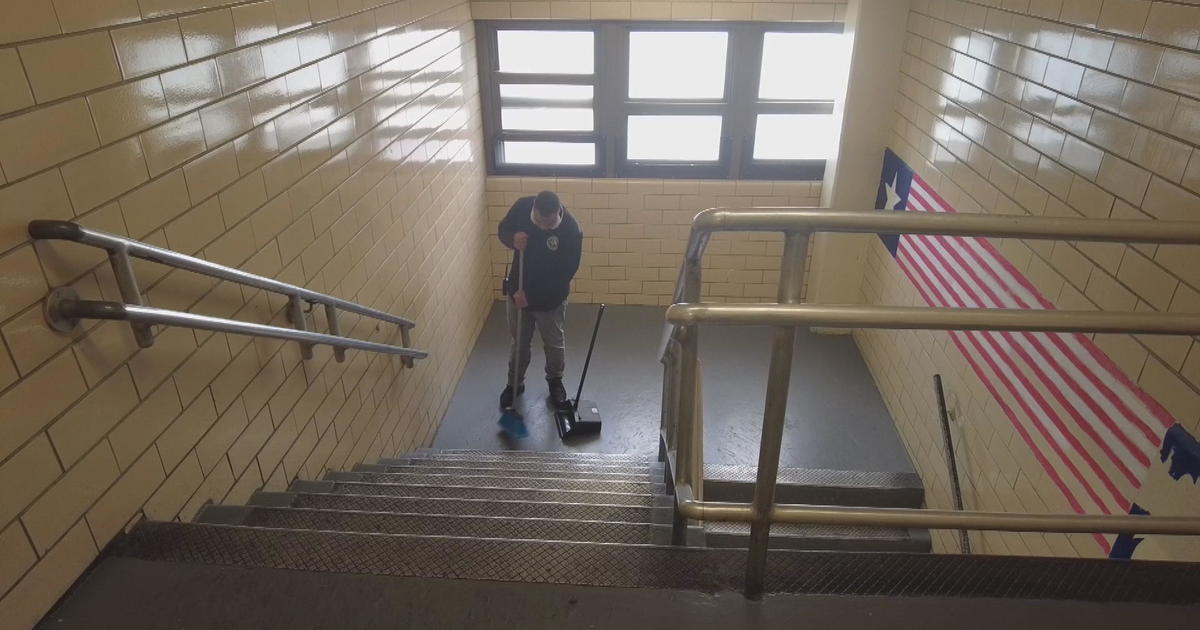EgyptAir Flight 804: What's Next In The Search?
By Ray Sanchez
PHILADELPHIA (CNN) -- The clues as to what happened to EgyptAir Flight 804 are few.
For the moment, authorities have recovered a human body part and part of an aircraft seat, according to the Greek Defense Ministry.
Parts believed to have come from the Airbus A320 were discovered Friday in the waters of the Mediterranean north of the coastal city of Alexandria, according to the Egyptian military.
And there are personal belongings of the 66 people who are presumed to have perished when the Cairo-bound flight disappeared from radar early Thursday.
The European Space Agency said Friday that its Sentinel-1A satellite had spotted a 2-kilometer (1.24-mile) oil slick near where the plane is believed to have crashed. It's possible the slick could be from another source.
But these discoveries 180 miles (290 kilometers) north of Alexandria are just the beginning for authorities trying to unlock aviation's latest mystery.
Here's what could happen next:
Obstacles to come
Assuming the plane crashed and it's at the bottom of the Mediterranean, search crews face myriad obstacles in recovering the wreckage and piecing together what happened.
"You've got upwards of 2,000 meters, or 10,000 feet of water to deal with," Tim Taylor, a submersible specialist, told CNN Friday.
"So when they say they found wreckage... you've got to be careful how you use the terminology. They found debris. If you're classifying wreckage as the full ship, that's probably on the bottom some place. That's going to be searched for over a long period of time before they find it. It is not going to happen fast."
On the surface, there are sea and weather conditions to contend with. And the depth of the water add to the challenge of ultimately reaching the wreckage.
"We're looking at weeks, if not months," aviation analyst Peter Goelz told CNN Friday. "They are going to have a tough time over the next week even just identifying where the main wreckage field is."
Lessons from previous tragedies
The cases of TWA Flight 800 and Air France Flight 447 hint at the difficulties that might lie ahead.
The first demonstrates how tedious but important reconstruction work is to explaining exactly what went wrong, while the second shows just how long an ocean recovery can take.
TWA Flight 800 exploded in midair shortly after takeoff from New York on July 17, 1996 killing all 230 people on board. The investigation began at the bottom of the Atlantic Ocean, with U.S. Navy and other divers spending more than 1,600 hours scouring for clues.
The evidence was pieced together from a debris field of 75 square miles. Thousands of fragments were pulled from a tangled web of wires and airplane skin.
Extracting the wreckage of TWA Flight 800 from the water and reconstructing it was critical to debunking various conspiracy theories, including suspicions that terrorists struck the plane with a rocket or that it was hit a meteor or a missile.
The National Transportation Safety Board report said that an electrical short circuit caused a spark in the fuel tank that led to the Boeing 747 exploding over the waters off Long Island.
On June 1, 2009, Air France Flight 447 was en route from Rio de Janeiro to Paris when communications from the Airbus A330 ended suddenly.
Its last known position -- over the Atlantic Ocean, two to four days by ship from the nearest ports -- and the ocean's depth hindered search efforts.
It took four searches over the course of nearly two years to locate the bulk of the wreckage and the majority of the 228 bodies in a mountain range deep under the surface. It took even longer to find the cause of the disaster.
In May 2011, the aircraft's cockpit voice recorder and flight data recorder were recovered from the ocean floor after an extensive search.
It was not until July 2012 that investigators published their report, which blamed the crash on a series of errors by the pilots and a failure to react effectively to technical problems.
Who knows what awaits the investigators of the EgyptAir 804 disaster.
"Until we have the black boxes -- the most important piece of information -- and pieces of the aircraft, everything to this point is just speculation," former NTSB chairman Jim Hall told CNN Friday.
Finding the black boxes
Recovery specialists will use locators to find a "ping" emanating from the flight recorder of a commercial aircraft. But the ocean can be a daunting environment.
And the batteries sending pings from the flight data and cockpit voice recorders can run out.
"The clock is ticking," Goelz said. "Some of the older recorders have a 30-day battery. Some of the newer recorders have a 90-day battery."
Crews use ships, unmanned vehicles and sonar technology in operations ranging from the surface down to 20,000 feet, according to experts.
Submersibles used in the operations have precision navigation and tracking systems, high-resolution video cameras and high-intensity LED lights that enable them to maneuver the debris field with precision, the experts said.
"The flight data recorder is going to have potentially hundreds or a thousand parameters, everything from speed and direction to kind of control surface positions," Deborah Hersman, a former chairwoman of the NTSB, told CNN on Thursday.
"The cockpit voice recorder can be tremendously helpful because they can hear the communication not just between air traffic control and the pilots, between the pilots and each other, between the pilots and cabin crew."
Searching for parts of the plane
Investigators will want to first locate the nose, tail and wings of the aircraft, Hersman said.
"They are going to be looking to check those control surfaces to make sure that they are intact and certainly if there is any sign of an explosion or foul play, they are going to look for markers of that," she said.
While no theory has been completely ruled out, speculation on what caused the flight to crash centered on the possibility of a terror attack.
Planes are stamped with serial numbers to allow parts to be identified and matched to a specific model and aircraft.
If identifying numbers are missing, tests are conducted on the part to determine its origin.
Because of currents, the wind and other factors, the search area can get bigger by the day.
Coordination is key
Greece, France, the United States and other nations were searching about 130 nautical miles southeast of the Greek island of Karpathos, Greek aviation officials said.
The United States added two additional P-3 Orion aircraft to the effort Friday, according to a U.S. defense official, with more expected "throughout the day and night until tomorrow morning to achieve continuous coverage."
"At this point," the official said, "we are not aware of any U.S. aircraft spotting debris from EgyptAir 804."
Greece has offered the nations involved in the search the use of military bases on the island of Crete, a Greek Defense Ministry spokeswoman said.
Coordination is key.
"It's like inviting people to come mow your lawn," Hall said. "If everyone shows up with different lawnmowers and different ideas
about what your yard should look like, you're going to end up with a mess."
The-CNN-Wire ™ & © 2016 Cable News Network, Inc., a Time Warner Company. All rights reserved.



